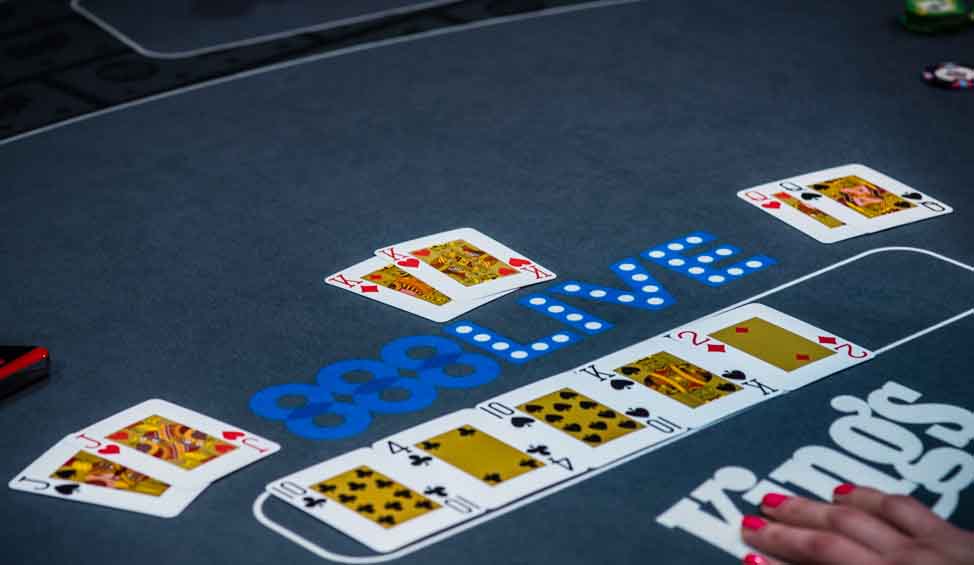In many ways, online poker is a game of its own compared to live poker, and the ability to accumulate stats on our opponents is one of the big reasons why.
While some online poker operators have disabled the use of tracking software that accumulates such data, others have introduced integrated stats tracking as part of their platforms.
Whether you play at a poker site that allows the use of third-party poker trackers or one that offers integrated stats, it is worth understanding the most commonly used poker stats and their application in the game.
Poker terms can be head spinning and if you are completely new to the world of poker trackers, HUDs, and poker stats, it can be even more confusing. Keep reading and find out which poker stats you should be on the lookout for when you set up your HUD or the next time you play at one of the sites that offer stats to everyone in the game.
How Poker Stats Work
Once you know the poker basics, learning poker stats will take your game to the next level. But, before we get into specific poker stats, it is worth discussing the general concept of poker stats, how you can get access to them, and how you can use them to your advantage.
In order to get poker stats on your opponents, you will first need to have poker tracking software such as PokerTracker or Hold’em Manager installed and running on your device while playing.
Note that some online poker operators no longer allow for the use of such software, but some of them do offer integrated stats in the poker platform itself.
If you do have the appropriate software and are playing at a site where poker stats are allowed, the software will start extracting data from all the hands you play and save it on your device.
Every time you play a hand, the software will ensure that every play from your opponents is accounted for, whether they folded, raised, made a bet, pushed all-in, or made any other play on any of the betting streets.
Once you have played plenty of hands against a particular player, you will have gained a big sample size on them, and the stats will become more and more relevant and descriptive of their playing style.
Regardless of the number of hands you have played against a player, their data will be shown to you as a series of poker stats, which you will need to know how to read in order to make any significant conclusions.
With that in mind, let’s take a look at some of the most relevant poker stats you will need to understand if you want to gain an edge in poker games in 2024.
#1 – VPIP
The most commonly displayed poker stat of them all is VPIP, which stands for voluntarily put into the pot and refers to the percentage of hands a player has invested money into the pot beyond the blinds and the antes.

Anytime a player makes a call or a raise before the flop, their VPIP goes up, and anytime they fold their cards, their VPIP goes down, effectively demonstrating the percentage of hands they play before the flop.
This is an extremely useful stat to have on hand, as it helps you quickly determine which players play too loose or too tight without having to remember any specific hands you played against them.
In a 6-handed poker game, players playing close to 25% overall VPIP will probably be pretty solid, while those playing significantly higher or lower than this will be playing a sub-optimal strategy.
For instance, a player playing a 45 VPIP is either a maniac or a calling station, while one playing a 12% VPIP is guaranteed to be a nit. Comparing their VPIP with their other stats, such as PFR and AF, will help you categorize the player in even more detail.
#2 – PFR
PFR measures preflop aggression and is the next poker stat you will absolutely want to have displayed in that first row of your HUD.
As you may have guessed, a player’s PFR stat goes up anytime they make a raise before the flop, which includes all 3-bets and 4-bets as well as open raises.
A player’s PFR will tell you a lot about their preflop tendencies and their poker skills, as an extremely low or high PFR typically describes a fairly bad poker player.
A player playing 25 VPIP should have a PFR of around 18, and these numbers are considered more or less optimal for 6-max poker games.
If you notice a player with an extremely low PFR, like 8, the player is guaranteed to be a calling station, as they only ever raise 8% of the time, while the other 92% of the time they either fold or call.
If you combine this stat with the player’s VPIP, you will get to the bottom of the player’s overall playing style and quickly recognize the biggest leaks in their game.
For instance, if a player plays 42/8 (VPIP/PFR), you will be able to easily fold to their raises or 3-bets, as they only ever raise with the very best poker hands out there.
#3 – AF

Aggression factor (AF) is another poker stat that will tell you a lot about a player’s overall playing tendencies, but this time around, not only looking at the preflop play.
The aggression factor takes into account every betting street from the preflop to the river and demonstrates the overall level of aggression a player exhibits.
The aggression factor is calculated by dividing all aggressive actions by all passive actions (calls), and an AF of about 3 is considered normal in today’s poker games.
If you see a player with an AF much higher than 3 at your tables, you can be pretty sure that they are a maniac, while one with a significantly lower AF is likely not to be bluffing enough or betting for value often enough, allowing you different ways to exploit their play.
#4 – ATS
Attempt to steal (ATS) is a poker stat most often used by tournament players, as it allows them to know how often a particular opponent tries to steal the blinds.
ATS is very similar to PFR, but it only takes into account raises from late position at the poker table, so it is typically higher than PFR, with most good regs playing ATS of 30 in full ring and 35 in 6-max games.

Checking out a player’s ATS when you find yourself defending the blinds against their late position raise will help you decide between defending and folding, as a high ATS gives you more incentive to play back at the raiser, while a low one allows you to fold more hands without worrying of getting exploited.
If you are a tournament player, you should add the ATS, as well as the fold to steal stat, to your HUD as soon as possible, as it is one of the most useful stats that allow you to quickly find out how aggressively your opponent is going to steal your blinds.
#5 – Fold to Steal
Just as much as you want to be aware of how often your opponents will try to steal your blinds, you want to know how often they will defend their own.
Stealing the blinds is one of the most important aspects of tournament poker, and finding players with a very high Fold to Steal stat will help you steal blinds more effectively.
The stat only takes into account the player’s folds against late position raises, and typically speaking, a number of around 60 will demonstrate a good player.
However, it is important to note that good players defend their blinds wider against small raises than they do against bigger raises, so the stat can sometimes be skewed in one direction or the other.
Yet, if you see a player with a Fold to Steal of 35, you should expect them to defend very wide, while one with a Fold to Steal of 80 is very unlikely to defend their blind and likely to fold to your late position raise.
#6 – 3-Bet %
Whether you play cash games or poker tournaments, a player’s 3-bet percentage is a key poker stat you will want to be aware of.
The 3-bet has become an integral part of poker games these days, and all competent players 3-bet somewhere between 5% and 10% of the time, depending on game format, stack depths, positions, and more.
Poker tracking software will give you even more detailed 3-betting stats by position if you open the pop-up window, but the overall 3-bet stat will also be useful at first glance as well.
For instance, playing against a player with a 3-bet of 15, you will be able to tell that this player bluffs way too much when 3-betting or 3-bets way too many hands for value.
In both cases, such a wide 3-betting range can be exploited by 4-bet bluffing more and calling with more hands, as the 15% range is not nearly as strong as a typical 3-betting range you would expect to play against.
#7 – Fold to 3-Bet
Perhaps even more important than the 3-bet % stat is the Fold to a 3-bet stat, which tells you how often a player folds when facing a 3-bet.
This is a stat that allows you to quite literally print money against many weak players, who tend to have a good grasp on opening ranges but are not too sure what to do when they face a 3-bet.
A player with a very high Fold to 3-Bet can be exploited by relentless 3-betting, as he will tend to fold to your re-raises and allow you to instant win tons of big blinds.
On the other hand, if a player has a low Fold to 3-Bet, you will want to adjust your 3-betting range against them and play a more linear range made up of almost solely value hands and very few bluffs.
For general reference, good players fold to 3-bets about 50% of the time, while any number significantly lower or higher than that is going to be quite exploitable.
#8 – WTSD%
The Went to Showdown Percentage (WTSD%) is one of the most useful poker stats, but also one that many players often neglect.

WTSD% tells you what percentage of the time a player goes all the way to showdown after entering the pot preflop, and it can be an excellent way to find good spots for bluffing your opponent.
In most cases, your WTSD% should be around 30, as you will not want to go all the way too often just because you entered the pot to begin with.
Yet, quite a few players play an incredibly high WTSD%, which instantly tells you to bluff them less and value bet them more across all betting streets, especially on the river.
A player with a very high WTSD% is likely to call bets across the board and be suspicious, so anytime you do have a decent hand, make sure to barrel it off and print money from all the light calls you are going to get.
#9 – Flop C-Bet
Continuation betting (c-betting) is one of the most common plays you will see at any poker table, so having a good idea of how often your opponent c-bet is quite an advantage.
The Flop C-Bet stat tells you exactly how often a player c-bets after opening the pot, and a number of about 70 is usually an indication of a solid player.
Since c-betting is profitable in so many cases, you should definitely be on the lookout for players with very low c-bet percentages, as this will allow you to fold to their c-bets more often than usual.
On the other hand, if you see a player c-betting 80% or more, you can get away with bluffing or defending against their c-bets more, and you will make money by playing more often against their c-bets.
#10 – Fold to C-Bet
Finally, the Fold to C-Bet stat is another one where you can get some useful information, as it tells you how likely you are to get your opponent to fold with just a C-bet and can help you better understand how they are playing their poker ranges postflop.
A solid player will usually fold to c-bets about 60% of the time, while weak players will fold way more often, and some fish will call almost 100% of the time.
Having the Fold to C-Bet stat on your HUD will allow you to adjust your c-betting frequencies and sizes by betting more often against players with a high Fold to C-Bet and only c-betting for value against those with an exceptionally low Fold to C-Bet.





